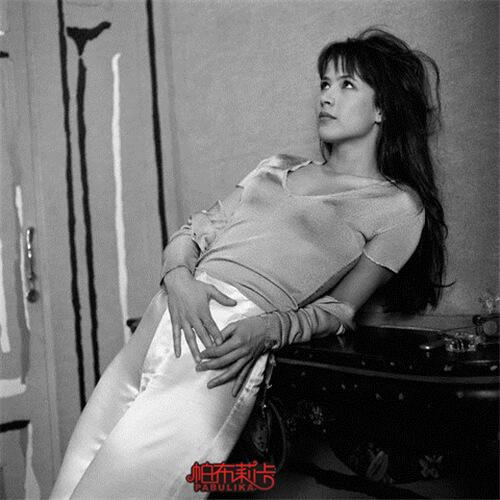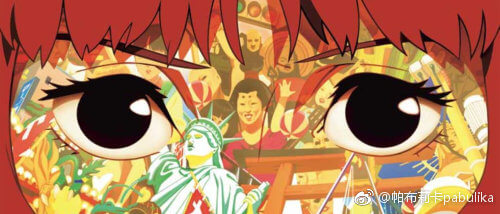
毁画
◎ 吴冠中
二十年前我住在前海北沿[1]时,附近邻居生了一个瞎子婴儿,我看着这双目失明的孩子一天天成长,为他感到悲哀,他将度过怎样的一生[2]!我想,如果这孩子是我自己,我决不愿来到人间,但父母总是珍惜自己的小生命,千方百计养育残疾的后代。作者对自己的作品,当会体会到父母对孩子的心情[3]。学生时代撕毁过大量习作,那是寻常情况,未必总触动心弦。创作中也经常撕毁作品,用调色刀戳向画布,气愤,痛苦,发泄。有时毁掉了不满意的画反而感到舒畅些,因那无可救药的“成品”不断在啮咬作者的心魂。当我在深山老林或边远地处十分艰难的条件下画出了次、废品,真是颓丧之极,但仍用油布小心翼翼保护着丑陋的画面背回宿处,是病儿啊,即使是瞎子婴儿也不肯遗弃。
数十年风风雨雨中作了大批画,有心爱的、有带缺陷的、有很不满意但浸透苦劳的……任何一个探索者都走过弯路和歧途,都会留下许多失败之作[4],蹩脚货,暴露真实吧,何必遮丑,然而,换了人间,金钱控制了人,进而摧毁了良知和人性。作品于今有了市价,我以往送朋友、同学、学生、甚至报刊等等的画不少进入了市场,出现于拍卖行。五十年代我作了一组井冈山风景画,当时应井冈山管理处的要求复制了一套赠送作为藏品陈列,后来我翻看手头原作,感到不满意,便连续烧毁,那都属于探索油画民族化的幼稚阶段,但赠管理处的那套复制品近来却一件接一件在拍卖行出现。书画赠友人,这本是我国传统人际关系的美德,往往不看金钱重友情。
艺术作品最终成为商品,这是客观规律,无可非议。但在一时盛名之下,往往不够艺术价值的劣画也都招摇过市,欺蒙喜爱的收藏者,被市场上来回倒卖,互相欺骗。我早下决心要毁掉所有不满意的作品,不愿谬种流传。开始屠杀生灵了,屠杀自己的孩子。将有遗憾的次品[5]一批批,一次次张挂起来审查,一次次淘汰,一次次刀下留人,一次次重新定案。一次次,一批批毁,画在纸上的,无论墨彩、水彩、水粉,可撕得粉碎。作在布上的油画只能用剪刀剪,剪成片片。作在三合板上的最不好办,需用油画颜料涂盖。儿媳和小孙孙陪我整理,他们帮我展开六尺以上的巨幅一同撕裂时也满怀惋惜之情,但惋惜不得啊!我往往教儿媳替我撕,自己确乎也有不忍下手的隐痛。画室里废纸成堆了,于是儿媳和阿姨抱下楼去用火烧,我在画室窗口俯视院里熊熊之火中飞起的作品的纸灰,也看到许多围观的孩子和邻居们在交谈,不知他们说些什么。画室里尚有一批覆盖了五颜六色的三合板,只能暂时堆到阳台上去,还不知能派什么用场,记得困难时期我的次品油画是用来盖鸡窝的。
生命末日之前,还将大量创作,大量毁灭,愿创作多于毁灭!
散文《毁画》是著名画家兼散文家吴冠中(1919—2010)的佳作,选自1955年5月出版的《吴冠中散文选》(由国际文化出版公司发行)。
[1]“前海北沿”意即“前海北岸”,可译为on the northern side of the Qianhai Lake或on the north of the Qianhai Lake。
[2]“他将度过怎样的一生”可译为What would become of it for life?或How was it to drag out this existence?,其中it均指“婴儿”。
[3]“作者对自己的作品,当会体会到父母对孩子的心情”可按“作品对于作者,犹孩子对于父母一般”译为A work of art is to the creator what a baby is to its parents。
[4]“任何一个探索者都走过弯路和歧途,都会留下许多失败之作”译为All art explorers are liable to take roundabout courses or lead themselves astray, thus ending up in fiascoes。“探索者”应指“艺术探索者”,因此译为art explorers。
[5]“有遗憾的次品”可按“成问题的画作”译为problematic paintings。
Scrapping My Paintings
◎ Wu Guanzhong
Twenty years ago, when I was living on the northern side of the Qianhai Lake, Beijing, one of my neighbors gave birth to a blind baby. That made me sad. What would become of it for life? Personally, I would have refused to come into this world disabled. Nevertheless, all parents love their own babies and will do whatever they can to rear them even though they are born disabled. A work of art is to the creator what a baby is to its parents. When I was a schoolboy, I used to tear up a lot of the exercises I did. That was a common practice, and I never regretted it. Now I am doing the same with my paintings. I will often use a palette knife to cut into a canvas so as to let off my pent-up anger or anguish. Sometimes, it will bring me ease of mind to scrap my own substandard works. Sometimes, I will feel extremely dejected when a painting I have done under hard conditions in remote mountains and dense forests turns out to be inferior. But I will nevertheless carry it home on my shoulder after wrapping it up carefully in a tarpaulin. It’s my sick baby, my blind baby. I shouldn’t abandon it.
I produced a great many paintings during the scores of difficult years. Some of them were my favorites, some were defective, some, though unsatisfactory, were fruits of my painstaking labor… All art explorers are liable to take roundabout courses or lead themselves astray, thus ending up in fiascoes. Defective works should be exposed rather than covered up. But things on earth have changed and men are so much under the sway of money that they have become conscienceless and unfeeling. Paintings, nowadays, have market prices. Many of my paintings given as presents to friends, schoolmates, students and newspapers and periodicals have found their way to the market or auction house. In the 1950s, after I finished a set of Jinggang Mountain landscape paintings, I donated a replica of it to the Jinggang Mountain Administrative Office at its request for permanent museum display. Later, when I looked over the original set of the paintings, which represented the immature stage of my attempts at nationalizing oil painting, I felt dissatisfied and had it all destroyed by fire. Unexpectedly, however, the replicated paintings recently showed up one after another in an auction house. Making a gift of painting or calligraphy to friends has been a traditional virtue of ours related to interpersonal relationship, which values affection above material gains.
It is natural and beyond reproach for works of art to end up becoming commodities. The problem is that inferior paintings of low artistic value, often, under cover of high reputation, openly beguile avid art collectors and people rush for speculative buying and reselling of them, cheating each other. I made up my mind long ago to scrap all of my unsatisfactory paintings so as to prevent the circulation of low-grade products. So I began to butcher my own babies. I would hang up on the wall my problematic paintings batch by batch and time and time again for rigorous screening. Substandard paintings were eliminated and demolished. Poor paintings on paper, be they ink-and-wash, watercolor or gouache, were torn to pieces. Poor oil paintings on canvas had to be cut to shreds with a pair of scissors. Poor paintings on three-ply boards were a hard nut to crack, and had to be blotted out with oils. My daughters-in-law and grandchildren would lend me a helping hand. But they sighed regretfully while joining me in unrolling and tearing up gigantic painting scrolls of over six feet in length. I too could not help feeling soft-hearted and silently endured anguish in my heart. As my studio was piled high with the scrapped paintings, my daughters-in-law, together with our housemaid, would take the scrapheap downstairs to make a bonfire of it in the yard. I looked out of my studio window and saw paper ashes flying up from the raging flames. And I also saw children and neighbors crowd around watching and chatting. I didn’t know what they were chatting about. Left in the studio were some threeply boards covered with multicolored oil paints. I had all of them temporarily stored in the balcony without knowing what I could ever do with them in the future. I remember that back in the famine year I even used my unsatisfactory oil paintings for building chicken coops.
I’ll, before the end of my life journey, continue to do a lot of creating as well as destroying, but, hopefully, more creating than destroying!
未经允许不得转载:帕布莉卡 » 吴冠中《毁画》 -经典散文英译-中英双语赏析
 帕布莉卡
帕布莉卡


 爱是一颗心遇到另一颗心(出处+配图)
爱是一颗心遇到另一颗心(出处+配图) 

